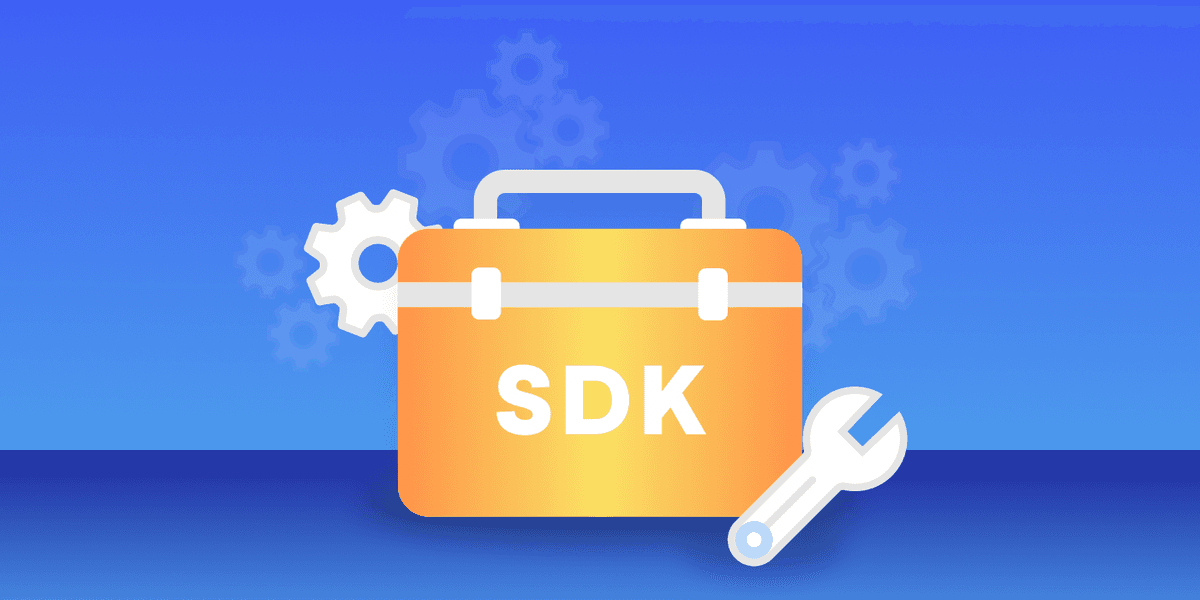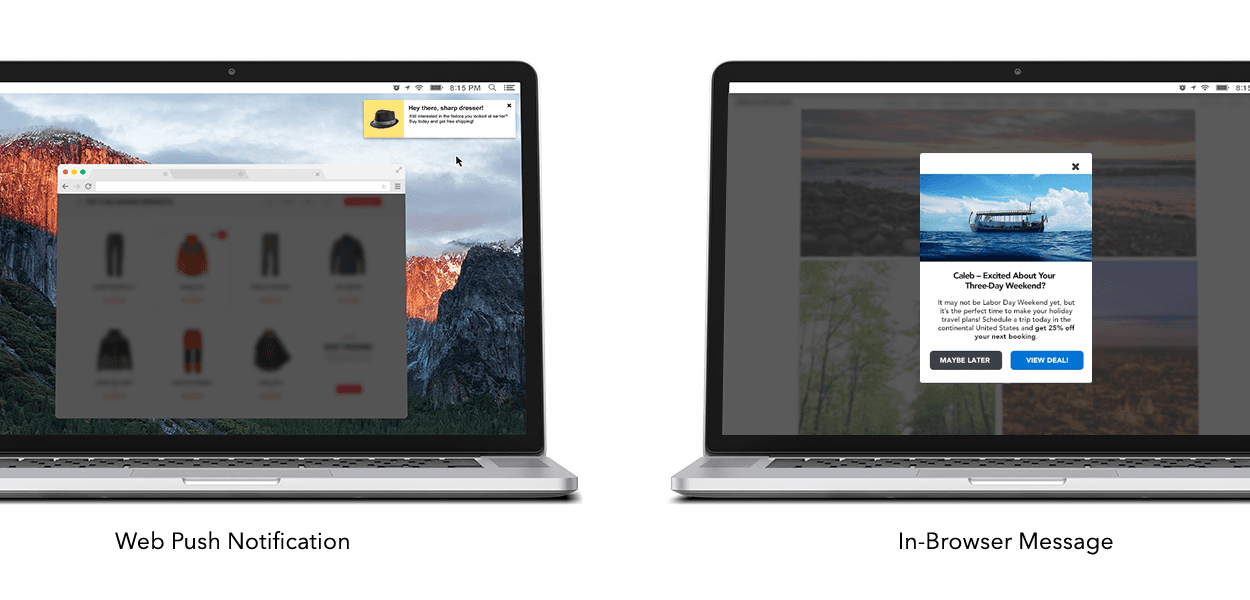Optimize Your Desktop and Mobile Web Engagement With The Braze Web SDK
Published on December 11, 2020/Last edited on December 11, 2020/5 min read


Team Braze
How well do most websites engage and retain their visitors? One metric that's an indicator of overall customer experience on the web is bounce rate. According to content marketing firm Brafton's analysis of the Google Analytics data of 181 websites, the average bounce rate for B2B and B2C brands is 58%. That means for every 100 visitors, more than half exit without taking any action, leaving plenty of room for improvement.
Initially, marketers had only a couple of options to try and catch the interest of (and collect information about) web visitors before they bounced: Encourage web users to download the company's mobile app or sign up for the company's email marketing list. Now, however, thanks to the arrival of web messaging, brands have more ways to engage visitors over the long haul.
What Is Web Messaging, Anyway?
A form of customer-facing outreach that arrived on the scene in the mid 2010s, web messaging is a way to communicate with individuals who are interacting with your brand directly via web browsers—both mobile and desktop—instead of via other channels like email or in-app messages (IAM). There are a few different flavors of web messaging, including:
As the name suggests, web push notifications are like mobile push notifications but are sent via the web. Like their mobile counterpart, these messages are typically short and should be timely but can support rich content, like images. Just as mobile push notifications reach your mobile app users even when they're not using your app, web push notifications reach web visitors whether or not they're viewing your website. As with push notifications, users must opt in, otherwise they won't receive these notifications.

Like in-app messages, in-browser messages are communications you can send to web visitors while they're engaging on your website directly. You've probably seen these in action without knowing the term for these types of messages. One use case for in-browser messages are exit banners, which ecommerce brands often deploy right as would-be shoppers exit without completing a purchase. You can display them as an interstitial (also called a modal or banner) that says, "Don't you want to finish your checkout?" or "Wait, before you go, don't you want to join our email newsletter?" Here are some of the most common types of in-browser messaging campaigns:
- Onboarding new users
- Illustrating new product features
- Highlighting new content
- Nurturing new leads
- Sharing exclusive promotions
- Cross-promoting other communication channels
Unlike web push and in-browser messaging, Braze Content Cards are a persistent type of web-based communication. These can be used to create:
- A notifications center, where you can centralize the updates that are most important to each customer
- A promotions feed, where customers can find their personalized special offers all in one place
- An onboarding center, a feed of tips and tutorials to help streamline the new user experience
- A company news center, where upcoming features and other updates are highlighted
While Content Cards are newer than other web messaging channels, they’re arguably the most flexible of these outreach methods, making them a key tool for driving stronger engagement on the web.
The Braze Web SDK Capabilities
Within the Braze suite of customer lifecycle engagement technology, we've designed a solution to enable best in class web messaging for brands. That is our Web SDK, a software developer kit that's easily integrated into your website without requiring a heavy lift from your in-house development team. The Braze Web SDK supports both data collection and web messaging and allows brands to take more control over the user experience on their website and beyond.
Our Web SDK works to bring web messaging to life in two key ways. First, it enables brands to collect customer engagement data from your website (both mobile and desktop), including session data and key user activities, such as purchases or other custom events. With this information, marketers can build out rich, data-driven customer journeys that engage web visitors in smart, relevant ways. Second, it makes it possible to leverage this customer engagement data to automatically trigger web outreach to users based on their engagement with your website or to other web messages you send—for instance, delivering a Content Card highlighting new videos you’re likely to be interested based on past browsing behavior or sending you a web push if you ignore an in-browser message.
With the Braze Web SDK, it’s easy to gain a deeper understanding of your web visitors—and to use that understanding to support more timely, relevant, and meaningful messaging campaigns that reach customers where they are.
Next Steps
Our research indicates that brands that implement a cross-channel strategy can see engagement increase by as much as 844%. Web messaging, with its three distinct channels—push, in-browser, and Content Cards—is one of the most underutilized outreach avenues. If your company is ready to start reaching web visitors where they are, download our guide, "Web Messaging: Beyond-the-App Engagement."
Related Tags
Be Absolutely Engaging.™
Sign up for regular updates from Braze.


